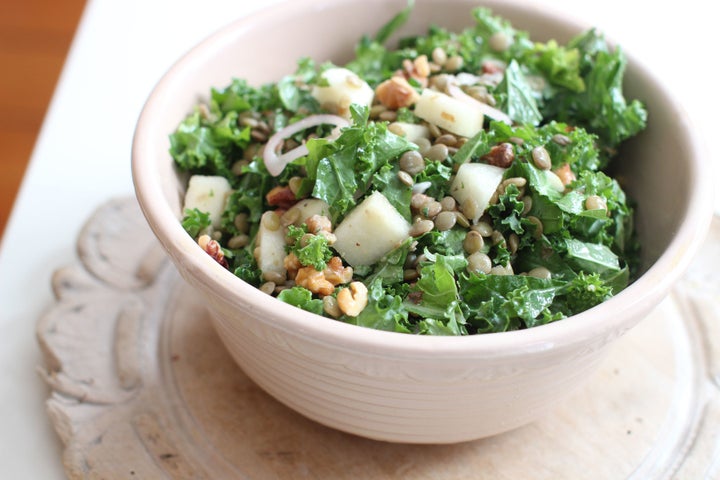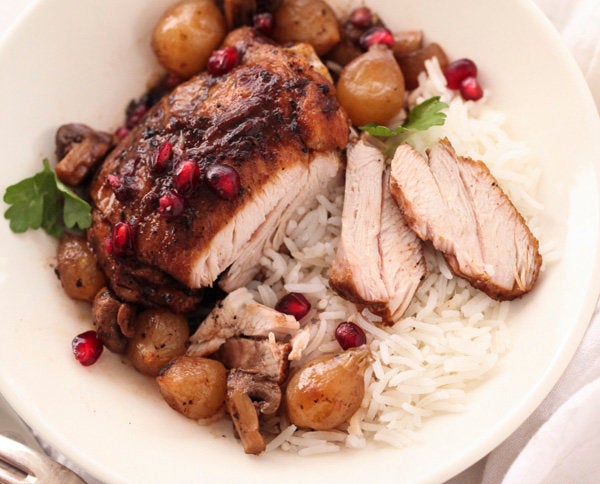
Anyone who regularly makes a green smoothie for breakfast was likely alarmed a few weeks ago to see headlines like “Sorry, Foodies: We’re About To Ruin Kale” and “People Are Getting Seriously Sick From Eating Kale” from acclaimed and highly critical news outlets Mother Jones and Harper's Bazaar.
These articles were not based on forthcoming peer-reviewed research or new government guidelines. Instead, they were aggregations of a feature story from Craftsmanship, a magazine about handmade objects and their makers, that chronicled the small-scale private experiments of Ernie Hubbard.
Hubbard, an unaffiliated scientist from Marin, California, who works at an alternative health clinic, has been testing local kale and soil and has arrived at the conclusion that the cruciferous vegetable's ability to “hyperaccumulate” the heavy metal thallium is posing a health risk to his community.
Hubbard tested levels of thallium in vegetable samples and in the urine of people from Marin -- a bastion for farmer's market fans -- who have complained of things like fatigue, brain fogginess and nausea. The symptoms are signs, he said, that they may be experiencing low-level heavy metal poisoning.
These signs, however, are correlative, which means Hubbard doesn't know for sure if crucifers have caused the symptoms or if something else may be at play. But this hasn't stopped other outlets from recommending that their readers cut back on certain vegetables.
Mother Jones wrote that based on Hubbard's experiments, "today's kale-fixated juice-heads may doing themselves a disservice." And Harper's Bazaar teased their story with the alarming line: "Find out why this superfood is actually super-poisoning."
In the only article to acknowledge the strangeness of this coverage, Vox called Hubbard’s limited experiments “incredibly bad science.”
Actually, the primary issue is the bad journalistic tendency to take any new "study" or research at face value, without asking enough questions. A craftsmanship magazine's decision to give one man's tiny pilot study a multi-part feature series is questionable enough (more stories are forthcoming), but why were Hubbard's findings uncritically parroted by otherwise very reputable media outlets, now advising readers to go easy on the kale and other cruciferous vegetables like broccoli, cauliflower, and cabbage?
A rep for Mother Jones said their piece "offers up plenty of caveats" and also cited three additional, peer-reviewed and published studies on certain vegetables' ability to hyperaccumulate heavy metal. However, she wasn't sure about the exact origin of the headline. Harper's Bazaar hasn't responded to inquiries.
Should we research kale and heavy metals to begin with?
Taken within their context, Hubbard’s questions do have merit, according to Joshua Nachman, a nutritionist at the Johns Hopkins Integrative Medicine and Digestive Center. Nachman noted that it's pilot studies like this one -- those that seek to answer a question that hasn’t been sufficiently explored by other scientists -- that are exactly the sort of seeds that could one day lead to a randomized controlled trial. Randomized controlled trials are the best way scientists have for figuring out if a variable causes a specific outcome, and it’s pretty much the only basis on which we do things like approve new drugs or figure out the cause of a disease.
But while Nachman praised Hubbard for finding interesting correlations in a small group of people, the relationship between kale consumption and heavy metal levels in the body should in no way be generalized to the wider population, he said.
"His study was not the industry standard randomized controlled trial, nor was it designed to be that way,” Nachman wrote in an email to HuffPost. “As such, his results should not attempt to be extrapolated to the general population as that would be a non-scientific use of his valuable data."
Hubbard conducted his tests without preventing bias, and "treats" people based on findings that were not created in a controlled, standardized environment. The experiments were also small, involving 50 people or so, which is not enough of a population to create any meaningful statistical significance.
But the fact that these methods were amplified and given legitimacy in multiple news outlets is no one's fault except for the journalists who spread it.
When health journalism fails, there is a threat to the public health: Some readers may eschew much-needed vegetables as a result of headlines and stories like these. And, to be extra clear, there’s no reliable evidence to suggest you should kick your kale to the curb, confirmed Shreela Sharma, a registered dietitian and associate professor in the Department of Epidemiology, Human Genetics and Environmental Sciences at the University of Texas Health Science Center at Houston.
Hubbard acknowledged the limitations of his research to HuffPost, and wrote in an email that he never intended for his preliminary results to stand on their own, without corroboration, as a prescription for the general public. Referring to the alternative wellness center where he works, he said, "We do not make recommendations to anyone other than our own patients, and this only after a thorough review of health history and further testing."
Bottom line: Keep eating those leafy greens
Upon reviewing Craftsmanship's story, Sharma expressed concern that Hubbard’s research, presented as it is, could give Americans a dangerous and counterproductive message about green leafy vegetables.
“Right now in the United States, we have an epidemic of people not consuming enough of these foods,” she said. “To me, that’s the bigger concern.”
The published scientific literature on vegetables taking up heavy metals is scarce. A 2006 Czech study cited by Craftsmanship in its story found that vegetables like kale do have the ability to accumulate disturbing levels of thallium in their leaves, but the very same researcher behind that study told Vox Thursday that it would depend on what kind of soil it was planted in, and that he doubted it could poison human beings. He also pointed out to Vox that canola, that oil everyone has in their kitchens, is also a very good accumulator of heavy metals.
In a similar vein, a 2008 Warren Wilson College study on kale's uptake of lead, another heavy metal, found that an adult would have to eat about 154 pounds of kale, with 40 nanograms of lead per gram of kale, in order to reach even the upper limits of tolerable lead levels.
Unlike Hubbard’s findings, or the sparse research on heavy metal poisoning via vegetables in general, scientists know for sure that people get many health benefits from eating a wide variety of fruits and vegetables.
